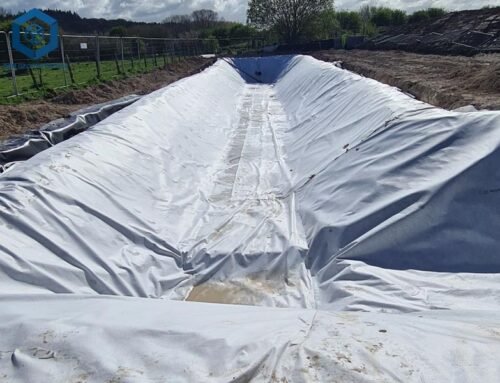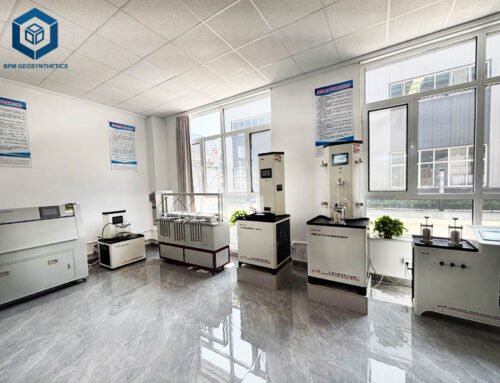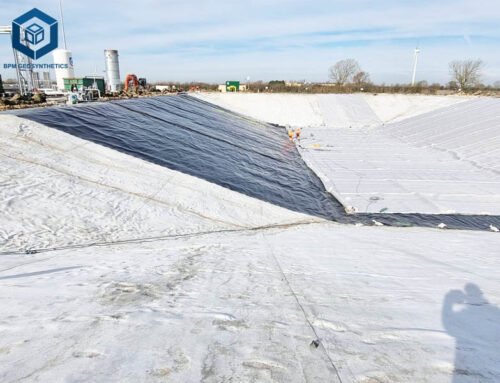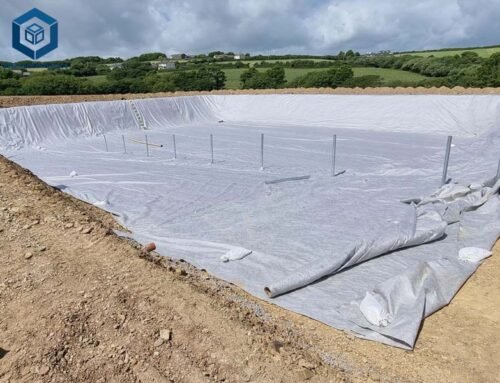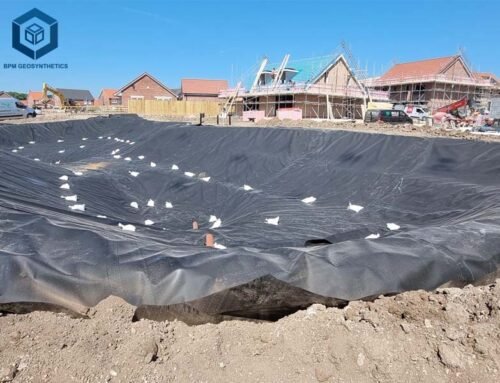Pond liners are critical geosynthetic materials used in creating durable, leak-proof water bodies for applications ranging from backyard garden ponds to large-scale aquaculture farms, stormwater retention systems, and civil engineering projects. With the global geomembrane pond liner market valued at $2.57 billion in 2024 and projected to reach $4.24 billion by 2030 at an 8.6% CAGR, understanding pond liner costs is essential for homeowners, landscapers, farmers, and engineers aiming to balance performance and budget (Research and Markets, 2024). Pond liner costs range from $0.28 to $5.00 per square foot ($3.00–$53.82/m²), influenced by material type, thickness, project size, and installation complexity, per BPM Geosynthetics. This guide provides detailed pricing, specifications, and actionable insights to help you make informed decisions for your pond projects.
1. What Is a Pond Liner?
Pond liners are impermeable or semi-permeable synthetic or natural materials designed to retain water, prevent seepage, and protect against erosion in ponds, lakes, and containment systems (EarthShields). Used in residential landscaping (25% of global demand), aquaculture, and industrial applications, they offer 20–100-year lifespans, 90% UV resistance with additives, and reduce maintenance costs by 20–30%, per GeoFanTex. With tensile strengths of 8–40 kN/m and low permeability (1×10⁻¹⁷ cm/s for geomembranes), pond liners ensure robust water retention, per ASTM D5887.
Types of Pond Liners
- High-Density Polyethylene (HDPE Liner): High tensile strength (20–40 kN/m), ideal for large ponds and landfills, costing $0.50–$3.00/ft², per BPM Geomembrane.
- Linear Low-Density Polyethylene (LLDPE): Flexible, suited for irregular pond shapes, priced at $0.60–$2.50/ft², per BPM Geosynthetics.
- Ethylene Propylene Diene Monomer (EPDM): Fish-safe, UV-resistant, used for koi ponds, costing $0.75–$2.00/ft², per HomeGuide.
- Polyvinyl Chloride (PVC): Cost-effective for small ponds, priced at $0.28–$2.50/ft², per Shandong Greenland.
- Reinforced Polyethylene (RPE): Lightweight, durable, costing $0.40–$0.90/ft², per AgTec.
- Bentonite Clay: Natural, eco-friendly, priced at $0.50–$3.00/ft², per HomeGuide.
- Preformed Plastic: Rigid, for small garden ponds, costing $0.75–$6.50/ft², per HomeAdvisor.
Key Specifications
- Tensile Strength: 8–40 kN/m, per ASTM D6637, for load-bearing.
- Thickness: 0.2–3.0 mm for geomembranes, 0.75–1.0 mm for rubber, per GeoFanTex.
- Permeability: 1×10⁻¹⁷ cm/s for geomembranes, per ASTM D5887; semi-permeable for clay.
- Durability: 20–100 years, 90% UV resistance with additives, per ASTM D4355.
- Certifications: ASTM GRI-GM13 (HDPE/LLDPE), ISO 9001:2015 for 95% quality compliance, per BPM Geosynthetics.
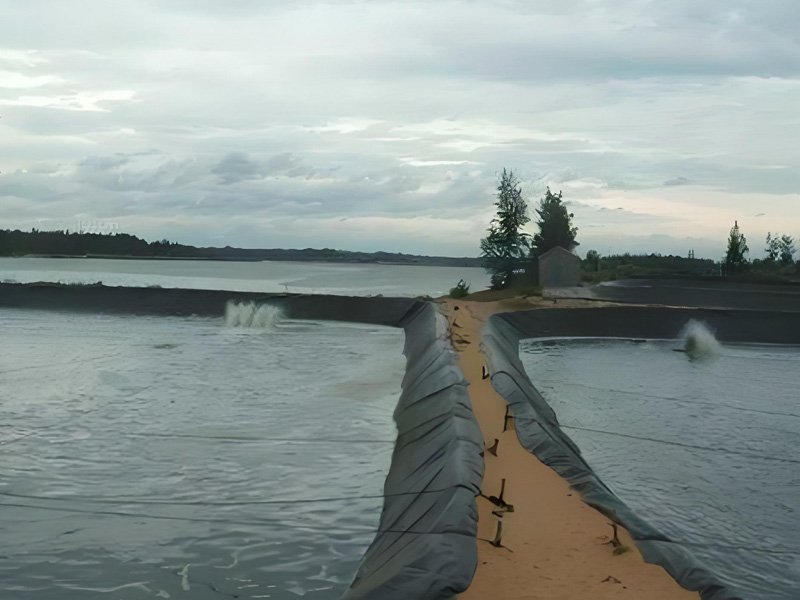
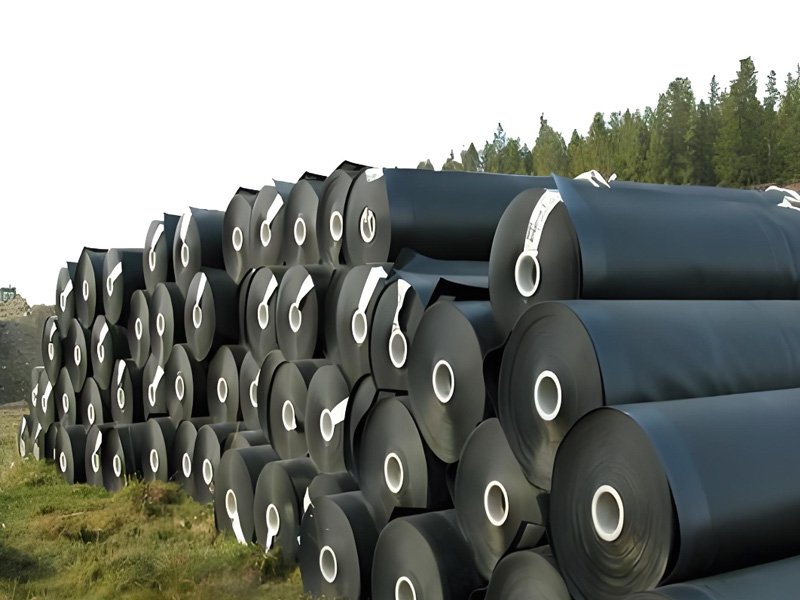
2. Factors Influencing Pond Liner Cost
Pond liner costs vary by 15–50% based on several factors, impacting project budgets, per Geosynthetics Magazine. Understanding these ensures accurate cost estimation and optimization.
2.1 Type of Pond Liner
- HDPE: $0.50–$3.00/ft², durable for large ponds, per BPM Geomembrane.
- LLDPE: $0.60–$2.50/ft², flexible for ponds, per BPM Geosynthetics.
- EPDM: $0.75–$2.00/ft², fish-safe for koi ponds, per HomeGuide.
- PVC: $0.28–$2.50/ft², budget-friendly but less durable, per Shandong Greenland.
- RPE: $0.40–$0.90/ft², lightweight for large projects, per AgTec.
- Bentonite Clay: $0.50–$3.00/ft², eco-friendly but complex installation, per HomeGuide.
- Preformed Plastic: $0.75–$6.50/ft², for small, rigid ponds, per HomeAdvisor.
2.2 Material Composition
- Virgin Resin (HDPE/LLDPE): $0.80–$3.00/ft², 40–100-year lifespan, per BPM Geomembrane.
- Recycled Resin: $0.28–$1.50/ft², 10–20 years for smaller ponds.
- Rubber (EPDM/Butyl): $0.75–$2.00/ft², fish-safe with 90% UV resistance, per World of Water.
- Additives (UV/Carbon Black): Add 5–15% to costs for 90% UV resistance, per GeoFanTex.
2.3 Thickness
- Thin (0.2–0.75 mm): $0.28–$1.00/ft², for small fish ponds.
- Medium (0.75–1.5 mm): $0.80–$2.00/ft², for aquaculture, per BPM Geosynthetics.
- Thick (1.5–3.0 mm): $1.50–$3.00/ft², for large ponds and landfills, per GeoFanTex.
2.4 Manufacturing Process
- Smooth HDPE/LLDPE: $0.50–$2.00/ft², cost-effective for flat ponds, per BPM Geomembrane.
- Textured HDPE: $0.80–$3.00/ft², 20% higher friction for slopes, per GeoFanTex.
- Co-extruded RPE: $0.40–$0.90/ft², lightweight with 5-layer technology, per AgTec.
- Rubber (EPDM/Butyl): $0.75–$2.00/ft², flexible for koi ponds, per World of Water.
2.5 Project Scale and Order Volume
- Small Orders (<1,000 m²): $1.00–$5.00/ft², limited economies of scale, per Alibaba.
- Bulk Orders (>10,000 m²): $0.28–$1.50/ft², 10–20% savings, per BPM Geosynthetics.
- Custom Sizes: Add 5–15% for tailored dimensions, per Shandong Greenland.
2.6 Installation Complexity
- DIY Installation: $0.10–$0.50/ft², requires expertise to avoid leaks, per HomeGuide.
- Professional Installation: $0.15–$0.75/ft², adds 15–50% to costs, per Geosynthetic Institute (2023).
- Site Preparation: $0.05–$0.20/ft², for subgrade leveling, per Vodaland.
2.7 Geographic Location
- North America: $0.80–$3.00/ft², 35% market share, per Future Market Insights.
- Europe: $1.00–$3.50/ft², higher due to regulations, per HUESKER.
- Asia-Pacific: $0.28–$1.50/ft², lower due to local production, per Alibaba.
2.8 Supplier Reputation
- Certified Suppliers: $0.80–$3.00/ft², 95% quality assurance (ASTM GRI-GM13), per BPM Geosynthetics.
- Generic Suppliers: $0.28–$1.50/ft², risking 20% lower durability, per Geosynthetics Magazine.
3. Average Pond Liner Cost in 2025
Based on 2024–2025 market data, pond liner costs range from $0.28 to $5.00 per square foot ($3.00–$53.82/m²), varying by type and application (BPM Geomembrane, HomeGuide, Alibaba).
Cost Breakdown by Type
- HDPE Liners: $0.50–$3.00/ft² ($5.38–$32.29/m²), e.g., 1.5 mm BPM HDPE (22.5 ft wide, 40–60 years), per BPM Geomembrane.
- LLDPE Liners: $0.60–$2.50/ft² ($6.46–$26.91/m²), for flexible ponds, per BPM Geosynthetics.
- EPDM Liners: $0.75–$2.00/ft² ($8.07–$21.53/m²), e.g., Firestone EPDM (10-year UV warranty), per HomeGuide.
- PVC Liners: $0.28–$2.50/ft² ($3.00–$26.91/m²), for small ponds, per Shandong Greenland.
- RPE Liners: $0.40–$0.90/ft² ($4.31–$9.69/m²), e.g., AgTec 40mil (5-layer), per AgTec.
- Bentonite Clay: $0.50–$3.00/ft² ($5.38–$32.29/m²), eco-friendly, per HomeGuide.
- Preformed Plastic: $0.75–$6.50/ft² ($8.07–$69.97/m²), e.g., 50–250-gallon rigid liners, per HomeAdvisor.
Cost by Application
- Garden Ponds: $0.28–$2.50/ft², 0.2–1.0 mm thickness.
- Koi Ponds: $0.75–$2.00/ft², fish-safe EPDM, per HomeGuide.
- Aquaculture: $0.80–$3.00/ft², for large ponds, per BPM Geosynthetics.
- Stormwater Retention: $1.00–$3.00/ft², 1.5–2.0 mm HDPE, per GeoFanTex.
Cost by Region
- USA: $0.80–$3.00/ft², $1.8B market in 2023, per Future Market Insights.
- Canada: $0.90–$3.20/ft², driven by aquaculture, per Layfield Group.
- Europe: $1.00–$3.50/ft², eco-friendly standards, per HUESKER.
4. Cost-Saving Strategies for Pond Liner Procurement
Optimizing pond liner costs can save 10–20% on project budgets, per Geosynthetic Institute (2023). Here are actionable strategies:
4.1 Bulk Ordering
- Order ≥10,000 m² to reduce costs to $0.28–$1.50/ft², saving 10–20%, per BPM Geosynthetics.
- Example: A 50,000 m² aquaculture project saves $5,000–$15,000 with bulk HDPE liners.
4.2 Local Sourcing
- Source from regional suppliers to cut shipping costs by 10–15%, per GeoFanTex.
- Example: U.S. projects using Solmax HDPE save 12% on freight, per GeoSolutionsInc.
4.3 Choose Certified Suppliers
- Select ASTM GRI-GM13-certified suppliers like BPM Geosynthetics for 95% quality, reducing maintenance by 20%, per Geosynthetics Magazine.
- Example: Certified HDPE liners last 40–60 years vs. 10–20 for generic.
4.4 Optimize Thickness
- Use 0.2–0.75 mm for garden ponds vs. 1.5–2.0 mm for aquaculture to save 30–50%.
- Example: A small pond project saved $3,000 using 0.5 mm HDPE, per BPM Geomembrane.
4.5 Negotiate MOQs
- Secure MOQs of 1,000–2,000 m² for small projects, saving 10%, per Alibaba.
- Example: A 2,000 m² koi pond saves $500–$1,000 with negotiated MOQs.
4.6 Eco-Friendly Options
- Choose recycled resin or biodegradable liners (e.g., bentonite clay) to meet sustainability mandates, saving 5–10% on compliance costs, per HUESKER.
4.7 DIY Installation for Small Ponds
- DIY for ponds <500 m² to save $0.15–$0.50/ft², ensuring proper site prep, per HomeGuide.
- Example: A 12×12 ft pond saved $200 with DIY EPDM installation.
5. Key Specifications for High-Quality Pond Liners
High-quality pond liners meet these standards to ensure 95% performance, per ASTM and GRI:
5.1 Tensile Strength
- Standard: 8–40 kN/m, per ASTM D6637.
- Impact: Supports loads up to 284 kips, per Geosynthetics Magazine.
- Example: Solmax HDPE (27 kN/m) for large ponds, per GeoSolutionsInc.
5.2 Permeability
- Standard: 1×10⁻¹⁷ cm/s for geomembranes, per ASTM D5887.
- Impact: Ensures 95% water retention, per BPM Geosynthetics.
- Example: 1.0 mm EPDM for koi ponds, per HomeGuide.
5.3 Durability
- Standard: 20–100 years, 90% UV resistance, per ASTM D4355.
- Impact: Reduces maintenance by 20%, per GeoFanTex.
- Example: RPE liners with 5-layer technology, per AgTec.
5.4 Thickness
- Standard: 0.2–3.0 mm, per ASTM D5199.
- Impact: Thicker liners increase 30% puncture resistance.
- Example: 1.5 mm HDPE for aquaculture, per BPM Geosynthetics.
5.5 Certifications
- Standard: ASTM GRI-GM13, ISO 9001:2015.
- Impact: Guarantees 95% compliance, reducing risks by 15%, per BPM Geosynthetics.
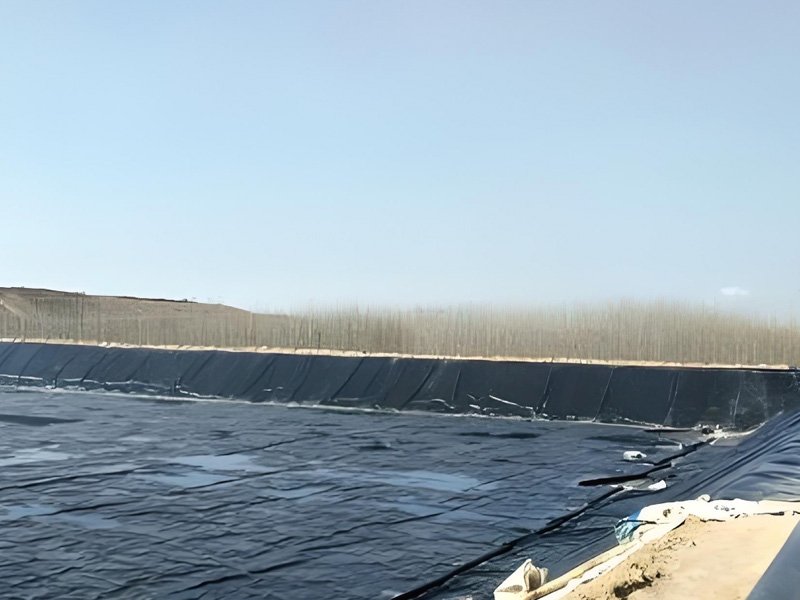
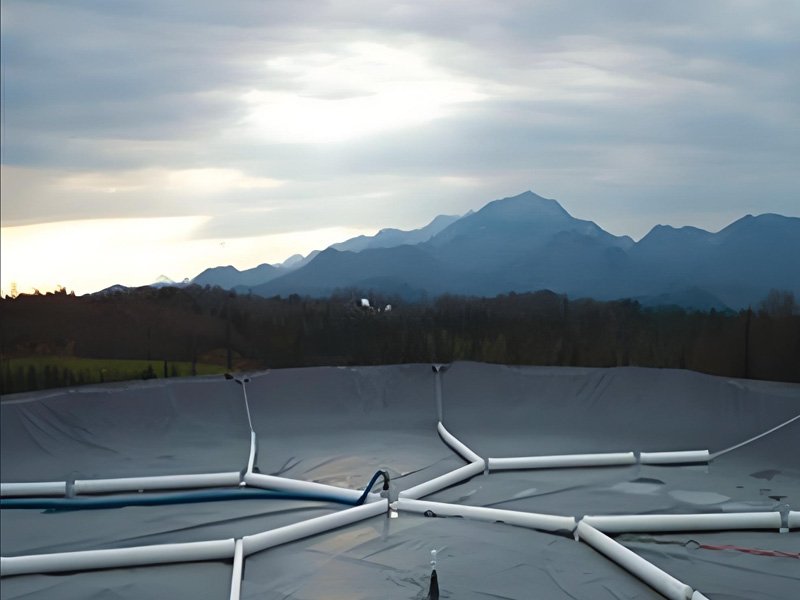
6. Comparing Pond Liners with Alternatives
Pond liners outperform alternatives like concrete and tarps in specific applications, per HomeGuide and EarthShields.
Pond Liners vs. Concrete
- Cost: Pond liners ($0.28–$5.00/ft²) vs. concrete ($50–$130/ft²).
- Performance: Concrete is permanent but cracks in freeze-thaw cycles; liners are flexible, per HomeGuide.
- Best For: Liners for flexible, cost-effective ponds; concrete for permanent structures.
Pond Liners vs. Tarps
- Cost: Pond liners ($0.28–$5.00/ft²) vs. tarps ($0.10–$0.50/ft²).
- Performance: Tarps are cheaper but less durable, prone to punctures, per HomeGuide.
- Best For: Liners for long-term use; tarps for temporary solutions.
Cost-Benefit Analysis
- Pond Liners: 20–100-year lifespan, saving $5,000–$20,000 per 10,000 m² in maintenance, per BPM Geosynthetics.
- Concrete: Higher initial cost, 30% more maintenance in cold climates, per HomeGuide.
- Tarps: Low cost but require 50% more frequent replacement.
7. Case Study: Pond Liner Cost Optimization
In 2024, a California aquaculture farm used 1.0 mm HDPE liners from BPM Geosynthetics for a 20,000 m² fish pond. By bulk ordering and using recycled resin, the project saved $10,000 (15% cost reduction) compared to EPDM liners, per BPM Geomembrane. The liners cost $1.00/ft², with a total project cost of $215,200, including installation, demonstrating 20% long-term maintenance savings due to 40–60-year durability.
8. Maintenance Tips for Pond Liners
To ensure 20–100 years of performance, follow these tips, per GeoFanTex:
- Installation: Use geotextile underlay (G3000) to increase puncture resistance by 30%, per Butyl Products.
- Inspection: Check for holes annually, reducing leak risk by 20%, per HomeGuide.
- Protection: Cover exposed liners with soil to prevent UV degradation, per HomeGuide.
- Storage: Store in UV-protected conditions to maintain 90% UV resistance, per ASTM D4355.
9. Conclusion
Pond liner costs in 2025 range from $0.28 to $5.00 per square foot, driven by type (HDPE: $0.50–$3.00; EPDM: $0.75–$2.00), thickness, and project scale, per BPM Geosynthetics. With 8–40 kN/m tensile strength, 0.2–3.0 mm thickness, and 20–100-year durability, pond liners ensure 95% water retention, saving $5,000–$20,000 per 10,000 m² in maintenance, per Geosynthetic Institute (2023). Certified suppliers like BPM Geosynthetics and Solmax guarantee 95% quality, while bulk ordering and local sourcing save 10–20%, per Alibaba.
For tailored quotes, contact BPM Geosynthetics to optimize your pond projects. Share this guide to create durable, cost-effective water bodies!

